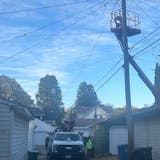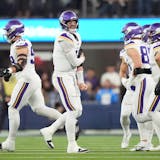There's no question roads have been emptier over the past year as restrictions related to the coronavirus kept many workers and students at home and curtailed social outings and large events.
The upside was motorists saved a lot of time and money as congestion in the Twin Cities all but disappeared.
Drivers on average spent nine hours stuck in gridlock during 2020 compared with 52 hours the previous year, according to the 2020 Global Traffic Scorecard released this month by INRIX, a Kirkland, Wash.-based traffic analytics company.
Twin Cities motorists logged 23% fewer miles, peak speeds were up dramatically during rush hours and total crashes declined by a third.
All that pushed the metro down to 77th on the list of most traffic-riddled cities in America. In 2019, the metro checked in at No. 19, said INRIX researcher Bob Pishue.
"Last year was not your typical year or typical situation," he said.
With nobody venturing to jobs, sporting events or entertainment, downtown traffic through February was down 52% compared with pre-COVID levels, the scorecard found. The biggest drop in traffic occurred during the morning commute, Pishue said.
That boded well for motorists navigating the metro's most congestion-prone corridors.

